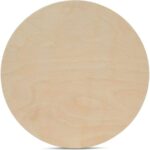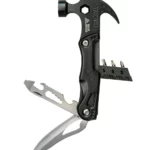I. Understanding PET Bottles and Their Recycling Potential
II. Essential Components for a Low-Cost Filament Extruder
III. Step-by-Step Guide to Building Your Own Extruder at Home
Understanding PET Bottles and Their Recycling Potential
Hey there! Have you ever wondered what happens to those plastic bottles after you toss them in the recycling bin? Let’s dive into the fascinating world of PET bottles and explore their recycling potential.
What are PET Bottles?
First things first, what exactly is a PET bottle? PET stands for Polyethylene Terephthalate, a type of plastic that’s incredibly popular for packaging beverages and other consumer products. You’ll recognize it by the recycling symbol with the number “1” inside it. These bottles are lightweight, durable, and, best of all, recyclable!
Why Recycle PET Bottles?
Recycling PET bottles is crucial for several reasons:
- Environmental Benefits: Recycling helps reduce landfill waste, conserves energy, and decreases greenhouse gas emissions. By recycling, you’re playing a part in reducing the footprint of plastic waste on our planet.
- Resource Conservation: Recycled PET can be transformed into new products, meaning that fewer new resources have to be extracted from the earth. This is a win-win for both nature and manufacturers!
- Economic Impact: The recycling industry creates jobs and supports local economies. Plus, using recycled materials can often be more cost-effective for manufacturers.
The Recycling Process
So, how does the recycling process work? It’s pretty cool!
- Collection: PET bottles are collected from recycling bins, drop-off locations, and curbside pickups.
- Sorting: After collection, the bottles are sorted to separate them from other materials. This is where the magic begins!
- Cleaning: The sorted bottles are then cleaned and prepared for processing. This step is crucial to ensure that any impurities are removed.
- Shredding: The clean bottles are shredded into small flakes, making them easier to handle.
- Reprocessing: Finally, the flakes are melted down and can be made into new PET products, like fibers for clothing or even new bottles! How incredible is that?
What Happens to Recycled PET?
Once recycled, PET can be transformed into a variety of products. Some common ways recycled PET is used include:
- Fiber for Clothing: You might be surprised to learn that some clothing brands use recycled PET to make stylish and sustainable clothing!
- New Bottles: Believe it or not, many new PET bottles are made from recycled materials, closing the loop and promoting a circular economy.
- Carpet and Padding: Recycled PET can also find its way into carpets and cushions, giving your home a cozy touch while helping the planet.
Conclusion
Understanding the recycling potential of PET bottles is essential for making informed choices about our consumption habits. Every time you recycle a PET bottle, you’re doing your part to help the environment, conserve resources, and promote a sustainable economy. So, next time you finish that refreshing beverage, remember: recycling isn’t just a choice; it’s a powerful action you can take for our planet!
Essential Components for a Low-Cost Filament Extruder
Creating your own filament extruder at home might sound like a daunting task, but with the right components and a bit of know-how, you can build a low-cost device that turns PET bottles into usable 3D printing filament. Let’s break down the essential components you will need to get started on this exciting project!
1. Extruder Motor
The heart of your filament extruder is the motor. It is responsible for feeding the plastic through the system. You will want to look for a **stepper motor** that provides enough torque and precision. A good choice could be a NEMA 17 stepper motor, which is widely used and relatively inexpensive.
2. Heating Element
To melt the PET plastic, you will need a reliable heating element. A **ceramic heating cartridge** works well for this purpose. Make sure to choose one that can reach higher temperatures (around 220°C) to effectively melt the PET material.
3. Extruder Barrel
The barrel is where the magic happens—where the plastic melts and turns into filament. You’ll want to use a **metal tube**, preferably made of stainless steel or aluminum, to handle the high temperatures without warping. The barrel length can vary, but around 20 cm is usually sufficient.
4. Nozzle
The nozzle is critical for determining the diameter of the filament. You’ll want a nozzle that can be easily swapped out for different filament sizes. A common choice is a **0.4 mm nozzle**, which is great for standard 3D printing applications. Be sure to check that it can withstand the temperatures you plan to use!
5. Cooling System
After the filament exits the nozzle, it needs to cool down quickly to retain its shape. A basic **fan** can do the trick! Position a small cooling fan near the exit of the extruder to help solidify the filament as it leaves the nozzle.
6. Filament Spooler
Once you’ve successfully extruded the filament, you’ll need a way to collect it. A simple **filament spooler** can be made from a few wooden dowels and bearings. This will help you wind up the filament as it comes out, making it easy to store and use later.
7. Control System
Finally, you’ll want a control system to manage the motor and heating element. A **microcontroller** like an Arduino can help you regulate the temperature and motor speed. This might sound technical, but there are plenty of online tutorials to guide you through the setup!
8. Safety Equipment
Let’s not forget about safety! Always wear appropriate **safety gear**, such as gloves and goggles, when working with high temperatures and machinery. It’s better to be safe than sorry!
Conclusion
Building a low-cost filament extruder is an achievable project with the right components. By gathering these essential parts and following through with your assembly, you’ll be well on your way to recycling PET bottles into valuable 3D printing filament. So, roll up those sleeves, gather your materials, and let your creativity flow!
Step-by-Step Guide to Building Your Own Extruder at Home
So, you’ve decided to embark on the exciting journey of building your very own filament extruder! That’s fantastic! Not only will you be recycling PET bottles, but you’ll also have the satisfaction of creating your own 3D filament. Let’s roll up our sleeves and dive into this step-by-step guide to help you build an extruder right in your workshop, or maybe even your garage!
Gathering Your Materials
First things first, before you start assembling anything, you need to gather the right materials. Here’s what you’ll typically need:
- DC Motor: A strong motor is crucial for pushing the filament through the nozzle.
- Heating Element: This will melt the PET plastic, turning it into a usable filament.
- Temperature Controller: To keep an eye on the melting temperature of the PET.
- Extrusion Nozzle: This is where the magic happens as the melted plastic is shaped into filament.
- Chassis or Frame: You’ll need something sturdy to hold everything together.
- Cooling System: To cool the filament quickly after extrusion.
Designing Your Extruder
Next up is your design. Take some time to sketch out how you want your extruder to look. Here are a few tips:
- Ensure your design allows for easy access to the heating unit and motor.
- Consider the space you have available; a compact design can be very efficient.
- Make sure your frame is sturdy enough to handle the mechanical stress.
Assembling the Parts
Now it’s time to put everything together! Start by assembling the frame. This will be the backbone of your extruder. Once your frame is sturdy, follow these steps:
- Mount the DC Motor: Secure the motor onto the frame using screws or brackets.
- Attach the Heating Element: Position it in a way that it’s easy to connect to your temperature controller.
- Install the Extrusion Nozzle: Screw it in place and ensure it’s aligned properly with the heating unit.
- Setup the Cooling System: Position fans or water cooling systems to ensure the filament cools quickly after extrusion.
Wiring and Testing
After everything is assembled, it’s time to wire up your extruder. Make sure you follow safety guidelines while doing this. Connect the motor, heating element, and temperature controller, ensuring everything is secure. Once you’re confident in your wiring:
- Plug in the extruder and power it on.
- Adjust the temperature according to the melting point of the PET.
- Keep an eye on the motor’s operation to ensure it’s feeding the plastic correctly.
Final Touches
Finally, once everything is running smoothly, it’s time to test it out! Start with small amounts of PET, and gradually work your way up. Remember, patience is key here. You might need to make a few tweaks along the way, and that’s perfectly okay!
So there you have it, a straightforward guide to building your own filament extruder at home. Not only will you be creating your own filament from recycled materials, but you’ll also gain a fantastic new skill. Happy extruding!










Comments